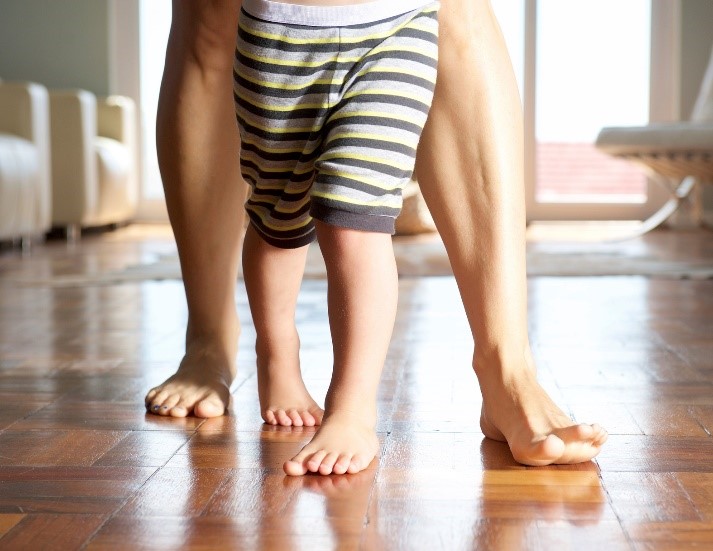A gait irregularity is a term used to describe a child’s walking pattern when it does not follow the typical development expected for the child’s age. A child’s walking pattern begins from around 12 months of age with a wide base of support and short quick steps, and does not resemble an adult walking pattern until after 3 years of age.
Some common types of gait irregularities include:
In-toeing (pigeon toed)
- When the child walks or runs, one or both feet turn inwards.
- This can be a result of a curve of the foot (metatarsus adductus), the tibia (tibial torsion) or the femur (femoral anteversion).
- Can be the result of intrauterine position and resolved with passive stretching techniques.
- Muscle imbalances at the hip can also influence medial rotation which may give the impression of an in-toed gait pattern.
- A paediatric physiotherapist can assess what is causing the in-toed position and prescribe a program to correct the underlying cause.
Toe Walking
- When a child walks or runs on their tip toes.
- It can be part of a typical development if a child walks on their toes for brief periods after learning to walk until about 2 years of age.
- It can be the result of reduced dorsiflexion of the ankle and tight calf muscles, it can be sensory related, or often the reason is unknown.
- A paediatric physiotherapist can prescribe activities and exercises to reduce toe walking and give advice regarding footwear and orthotic heel wedges to help.
Knock Knees (Genu Valgum)
 When a child’s knees touch but feet remain apart when standing and walking.
When a child’s knees touch but feet remain apart when standing and walking.
- Typically starts at around 2 years of age, peak at around 3 ½ years of age and resolve by 6-7 years of age
- An in-toed or flat footed gait pattern may be seen with walking which may benefit from orthotic correction
- Balance may be affected which can be assisted in developing through exercises from a paediatric physiotherapist
For more information please contact our paediatric trained physiotherapists.

